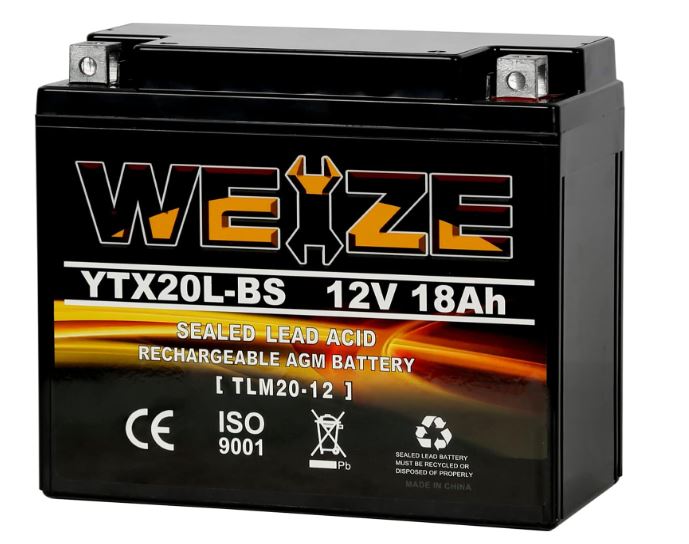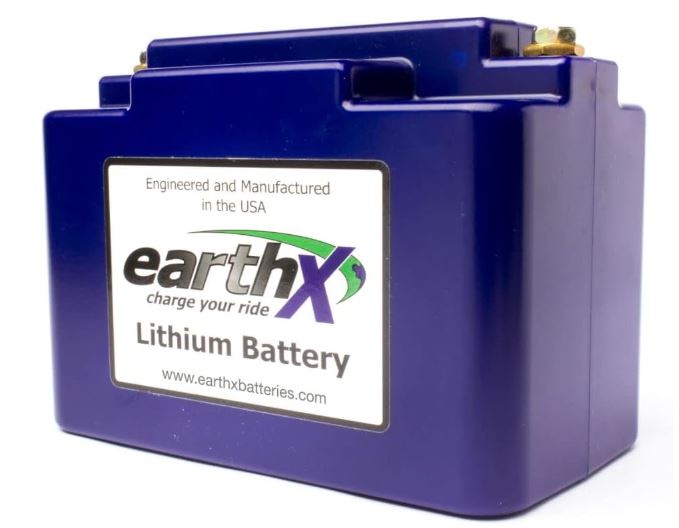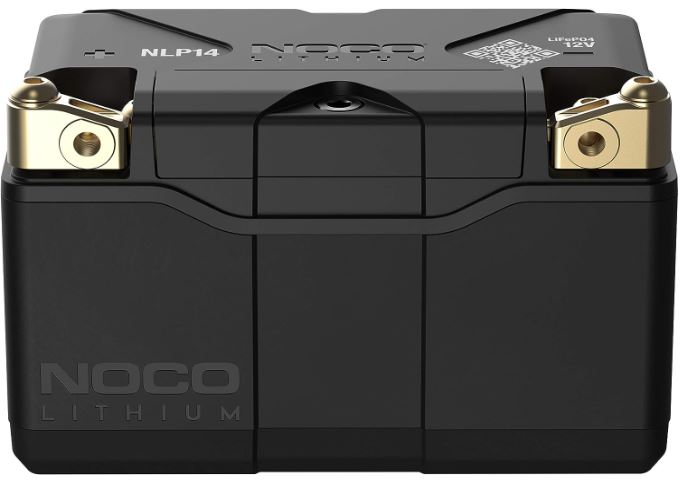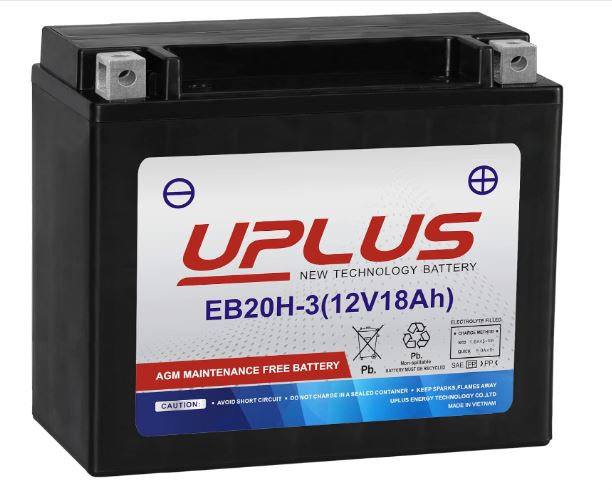Choosing the Right Snowmobile Battery
The harsh winter conditions and demanding terrain of snowmobiling require a battery that can deliver reliable performance. Fortunately there are plenty of options out there, and we’re here to help you find the right battery for whatever type of snowmobiling you’re into and can afford. Let’s take a quick look at the two main types of batteries that dominate the snowmobile market and why you might consider each. Then we’ll talk pros and cons of each type and look into specific battery recommendations.
Sealed Lead Acid (SLA) and Absorbed Glass Mat (AGM): Budget-friendly, readily available, and low maintenance, but with reduced cold performance and short to moderate lifespan. Spill proof and vibration resistant. Ideal for most riders in most climates. Good balance of affordability and performance.
Lithium Iron Phosphate (LiFePO4): Extremely lightweight, boasts exceptional cold tolerance, and provides the longest lifespan. Charges quickly and requires no maintenance. Ideal for demanding riders who prioritize performance and environmental benefits.
Here are some factors to consider when choosing the type of battery to put in your snowmobile.
Riding conditions: Cold climates or frequent deep discharges may favor LiFePO4 batteries, but AGM batteries will perform almost as well.
Budget: SLA AGM batteries offer the best value, while LiFePO4 requires the highest initial investment.
Weight: LiFePO4 batteries are significantly lighter, improving snowmobile performance.
Life Span: SLA AGM batteries will last longer than the traditional SLA batteries, but LiFePO4 batteries have the longest expected life span available on the market.
Sealed Lead Acid Batteries
Traditional lead acid batteries, while not the newest technology, have stood the test of time and remain a popular choice for powering snowmobiles. There have been a lot of advancements in lead acid batteries for the use in snowmobiles, including the sealed versions, as well as the addition of absorbed glass mats (AGM).
Sealed lead acid batteries (SLA) are more suited for snowmobiles than the non-sealed variety because of all the vibration, bouncing and movement a snowmobile battery has to endure during use. The sealed battery does not allow acid to leak out, and thus it is also a maintenance free battery – no addition of acid or water is necessary. These sealed batteries are also great because they can be mounted in any position, without having to worry about the acid leaking out of ports.
How Lead Acid Batteries Work
Plates made of pure lead and lead dioxide act as the electrodes where the chemical reactions occur. A solution of sulfuric acid (electrolyte) plays a crucial role in facilitating the flow of electrons between the plates. A separator material prevents the positive and negative plates from touching, preventing short circuits. All of this is housed in a sturdy container that protects it from the elements and from physical damage.
When you turn on your snowmobile, the SLA battery undergoes a series of chemical reactions. As the engine cranks, lead sulfate forms on the plates, and the electrolyte becomes less acidic. This process releases electrons, generating the electricity needed to start the engine. Once the engine is running, the alternator replenishes the battery by reversing the chemical reaction. Lead sulfate is converted back to lead and lead dioxide, and the electrolyte becomes more acidic.
Pros and Cons of Sealed Lead Acid (SLA) Batteries for Snowmobiles:
Pros:
Affordable: SLA batteries are the most cost-effective option compared to other snowmobile battery types.
Readily available: Easily found at most auto parts stores and online retailers.
Simple design: Easy to understand and maintain.
Durable: Robust construction can withstand the harsh winter elements.
High cranking power: Provides sufficient power to start most snowmobiles, even in moderate temperatures.
Cons:
Reduced cold performance: Cranking power diminishes significantly in cold temperatures, potentially leading to starting issues.
Shorter lifespan: Compared to AGM and LiFePO4 batteries, SLA batteries have a shorter lifespan, requiring more frequent replacements.
Heavyweight: SLA batteries are heavier than other battery types, which can impact the overall performance of your snowmobile.
Absorbed Glass Mat (AGM) Technology
These days, most SLA batteries on the market also come with AGM technology. While traditional lead-acid batteries have been the standard option for years, Absorbed Glass Mat (AGM) batteries have rapidly gained popularity among snowmobilers due to their superior performance and durability. Unlike traditional lead-acid batteries that contain a free flowing liquid electrolyte, AGM batteries use highly absorbent fiberglass mats to physically contain the electrolyte. This design offers several advantages. The fiberglass mats allow more of the electrolyte to come in contact with the lead plates, and more lead plates can be packed into a small area, which increases the battery’s available power. They also provide superior cushioning to protect the battery against physical damage.
AGM batteries operate through the same chemical reactions as traditional lead-acid batteries. However, the absorbed glass mat allows for efficient diffusion of the electrolyte, leading to several benefits:
High cranking power: Delivers strong starting power, even in sub-zero temperatures.
Faster recharge time: Recharges significantly faster than traditional lead-acid batteries.
Longer lifespan: AGM batteries last 2-3 times longer than traditional lead-acid batteries.
Top SLA AGM Batteries for Snowmobiles
Weize YTX20L-BS – Link to Amazon

Weize makes an excellent battery for snowmobiles that features high cold cranking amps with a low self-discharge rate and high resistance to mechanical impact and vibrations. It is ideal for use as a cranking or starting battery for due to large bursts of power it provides during startup.
More details:
Maintenance-Free, spill proof and leak proof
Absorbed Glass Mat Design(AGM)
Valve Regulated Vent System
Extreme Freeze, Heat and Vibration Resistance
Superior Starting Power and Deep Cycle Capacity
Interstate YTX20H-BS – link to Amazon
More details from Interstate:
Interstate has a good reputation throughout the battery world, and they’re good about standing behind their product. This battery can be mounted at virtually any angle without spilling or leaking. It includes a Safety Flame-Arrestor within the battery. The battery is also enhanced with active material and compounded to withstand vibration while prolonging battery life
Battery is supplied dry and provides a pre-mixed, no pour acid pack for the freshest battery possible. Once filled, it is permanently sealed so you’ll never have to fill with water or check acid level, making it extremely dependable and maintenance free.
Yausa YTX20HL-BS – link to Amazon
These Yausa batteries are made in the USA and have developed a good reputation in the powersports world. Their YTX20 battery boasts 310 cold cranking amps. Their batteries have advanced lead-calcium technology which holds its specific gravity more than 3 times longer than conventional batteries. The battery comes with a separate acid bottle – you have to add acid, but never water. The acid comes separate to keep the battery fresh until it’s ready to be put in service.
UPLUS YTX20L-BS – link to Amazon
The UPLUS is a good budget-friendly option with a pretty good reputation. The batteries are made in Vietnam but they have a U.S. office. They claim a 5 year life on these AGM batteries and the reviews are mostly very positive. For 60 bucks or so, it’s probably worth checking out if you’re on a budget.
Lithium Iron Phosphate (LiFePO4) Batteries for Snowmobiles
Lithium iron phosphate (LiFePO4) batteries are revolutionizing the snowmobile world, offering a powerful and reliable solution for riders who demand the best. Unlike traditional lead-acid and AGM batteries, LiFePO4 batteries use lithium iron phosphate as the cathode material. This unique chemistry offers several advantages:
Lightweight: Up to 70% lighter than lead-acid batteries, improving snowmobile handling and acceleration.
Extreme cold tolerance: Maintains high cranking power even in sub-zero temperatures.
Long lifespan: Lasts up to 5 times longer than lead-acid batteries, reducing replacement costs.
Fast charging: Charges significantly faster than lead-acid batteries.
Maintenance-free: No need to add water or check electrolyte levels.
Eco-friendly: No harmful materials like lead or acid, minimizing environmental impact.
How do LiFePO4 Batteries Work?
LiFePO4 batteries operate through a similar process to lead-acid batteries, but with lithium ions instead of lead. This chemical reaction provides several benefits:
High energy density: Stores more energy per unit volume, providing superior cranking power.
Low self-discharge rate: Holds charge well during storage, reducing the need for frequent charging.
Safe operation: LiFePO4 batteries offer inherent safety features, making them less prone to thermal runaway.
Pros and Cons of LiFePO4 Batteries for Snowmobiles:
Pros:
Unmatched cold performance: Starts effortlessly in the harshest winter conditions.
Significantly lighter: Improves handling and overall snowmobile performance.
Extraordinary lifespan: Provides years of worry-free operation.
Rapid charging: Saves valuable time and gets you back on the snow faster.
No maintenance: Eliminates the need for tedious battery care.
Environmentally friendly: Reduces your carbon footprint and protects the environment.
Cons:
Higher initial cost: LiFePO4 batteries are the most expensive option among snowmobile batteries.
Specialized charging: Requires a compatible LiFePO4-specific charger.
Limited availability: Not as readily available as lead-acid or AGM batteries.
Top LiFePO4 Batteries for Snowmobiles
EarthX ETZ14C – link to Amazon

EarthX makes a lightweight, powerful battery with a long lifespan and excellent cold cranking performance. It tailor-made for snowmobiling. Here’s more from the company:
The ETZ14C has been created specifically for the cold weather snowmobile market with a battery management system that has been modified for cold start temperatures! It is a compact size so it will fit ANY new snowmobile, whether it is a Polaris, Ski Doo BRP, Yamaha, or Arctic Cat, with the use of foam spacers! It has amazing cranking amps of 330CCA and only 2.5#!!!! That is 11+ pounds of instant weight savings! The ETZ14C has 6.8Ah capacity and has the battery management system minus over discharge protection and excessive cranking protection so it will not cut off in cold weather starts with a 1 year warranty. This battery was designed for high cranking amps in the cold. Terminal adapters are included with this battery if you have a front mount connection with the standard size of 6mm.
NOCO Lithium NLP14 – link to Amazon

For a LiFePO4 battery, the NOCO is a great value for the buck. I think this battery will do everything you need it to….I only hesitate a bit because unlike the EarthX (and unlike many of the small engine batteries on the market, for that matter) it isn’t designed specifically with snowmobiles and cold weather in mind. But it does get a lot of great reviews.
The Future of Snowmobiling
LiFePO4 batteries are rapidly becoming the preferred choice for snowmobilers who demand the best performance and reliability. Their superior characteristics, along with their environmental benefits, are paving the way for a more sustainable and powerful future for the sport. And plus, it’s pretty awesome not to have to buy a new battery every year.

